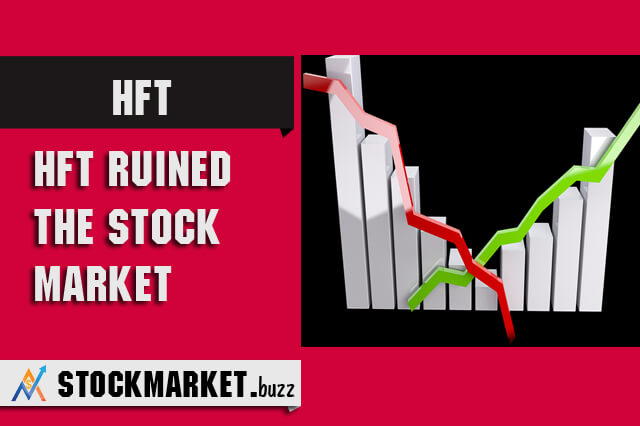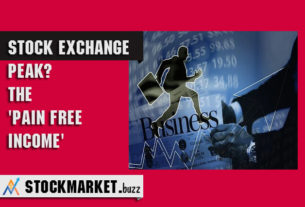Table of Contents
Has HFT Ruined The Stock Market For The Rest Of Us?
In the event that you are a financial backer, high-recurrence exchanging (HFT) is a piece of your life regardless of whether you don’t have any acquaintance with it. You’ve probably bought shares offered by a PC, or sold offers that were bought and in a flash sold by another PC. HFT is disputable. Dealers differ and examines repudiate different examinations. Notwithstanding the feelings, what is most significant is what HFT means for your cash.
High-recurrence exchanging is censured for the blaze crash that happened on May 6, 2010, when the significant records dove surprisingly fast.
In any event one examination proposes that HFT firms make higher benefits when exchanging against retail financial backers in the fates market.
In spite of fears over high-recurrence exchanging, yearly income at HFT firms has declined essentially since 2011.
What Is High-Frequency Trading (HFT)?
High-recurrence exchanging (HFT) is a more extensive term for different exchanging systems that include purchasing and selling monetary protections at very high velocities. Utilizing algorithmic exchanging, PCs can recognize market designs and use robotized and pre-modified directions to execute purchase and sell orders in a matter of milliseconds.
One procedure is to fill in as a market creator, where the HFT firm gives liquidity on both the purchase and sell sides. By buying at the bid cost and selling at the ask value, high-recurrence merchants can earn benefits of a cent or less per share. This means large benefits when duplicated more than a great many offers.
Does High-Frequency Trading Hurt the Market?
Since most exchanging leaves a mechanized paper trail, one would figure it is not difficult to take a gander at the acts of high-recurrence dealers and answer this inquiry. Notwithstanding, HFT organizations are hesitant to disclose their exchanging exercises, and the a lot of information included makes it hard to frame a strong picture.
Pundits of high-recurrence exchanging point to the glimmer crash that happened on May 6, 2010. The significant files strangely plunged 5-6% in minutes, and similarly as mysteriously, immediately bounced back. Portions of individual organizations were executed at costs over 60% off their worth only minutes prior. A few exchanges executed for a penny or $100,000—stub provide cost estimates that were never expected to be filled.
The Securities and Exchange Commission (SEC) gave a report accusing one exceptionally huge exchange the S&P e-scaled down prospects contract, which set off a falling impact among high-recurrence brokers. As one calculation sold quickly, it set off another, making a monetary snowball.
Following the glimmer crash, the SEC grew new electrical switch decides that would force an exchanging stop when a stock goes up or somewhere near 10% or more inside a five-minute time span. Numerous pundits found out if forcing more tight guidelines on high-recurrence dealers appeared well and good, particularly since more modest, less noticeable blaze crashes occur all through the market with routineness.
Does High-Frequency Trading Hurt Retail Investors?
What is essential to the vast majority of the contributing public is what high-recurrence exchanging means for the retail financial backer. This is the individual whose retirement reserve funds are on the lookout, or the individual who puts resources into the market to acquire preferred returns over the close to non-existent premium that comes from an investment account. A recent report shed some light on this inquiry.
Previous financial specialists for the Commodity Futures Trading Commission (CFTC) contemplated HFT firms over a two-year time frame and found that income was concentrated among a modest bunch of organizations in a champ brings home all the glory market structure.
Contemplating the S&P 500 e-small agreements, the specialists tracked down that high-recurrence merchants made a normal benefit of $1.92 for each agreement exchanged with huge institutional financial backers and a normal of $3.49 when they exchanged with retail financial backers. The paper presumed that these benefits were to the detriment of different merchants and this may make dealers leave the prospects market.
Conclusion
Unchecked, the expansion of high-recurrence exchanging could hazard making the discernment that the little financial backer can’t win. Governments have looked to get control over HFT firms, for instance, by proposing a for every offer exchanging charge. In 2012, Canada raised expenses on market messages like exchanges, request entries, and retractions, which excessively hit HFT firms since they send a bigger number of messages than different merchants.
In spite of fears over high-recurrence exchanging, there is additionally proof to propose that HFT firms essentially don’t represent the danger they once did. Income and benefits have dwindled, making it harder for HFT firms to endure. Industrywide, yearly income is assessed at $6.1 billion out of 2021, down extensively from more than $22 billion of every 2011.



